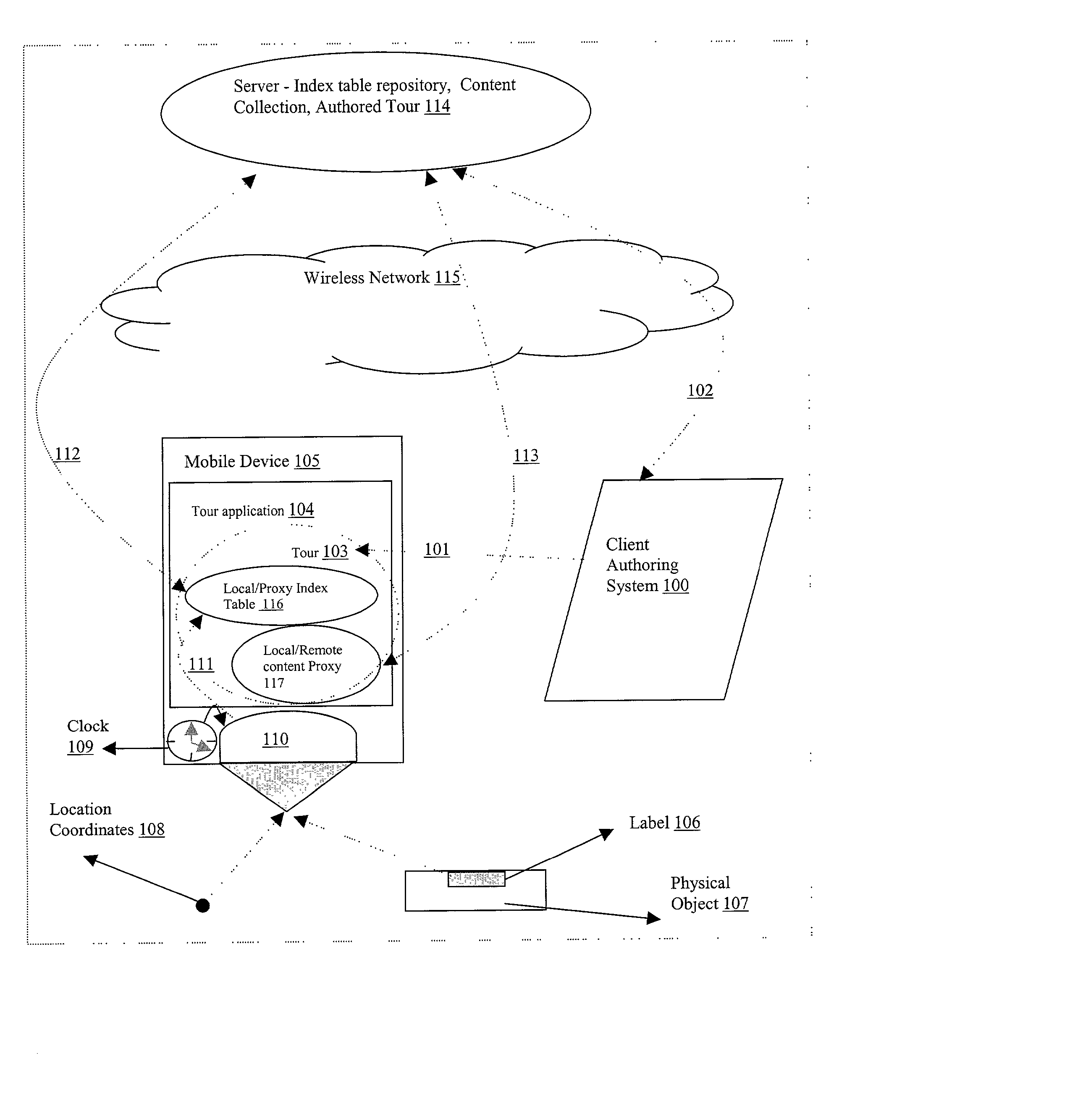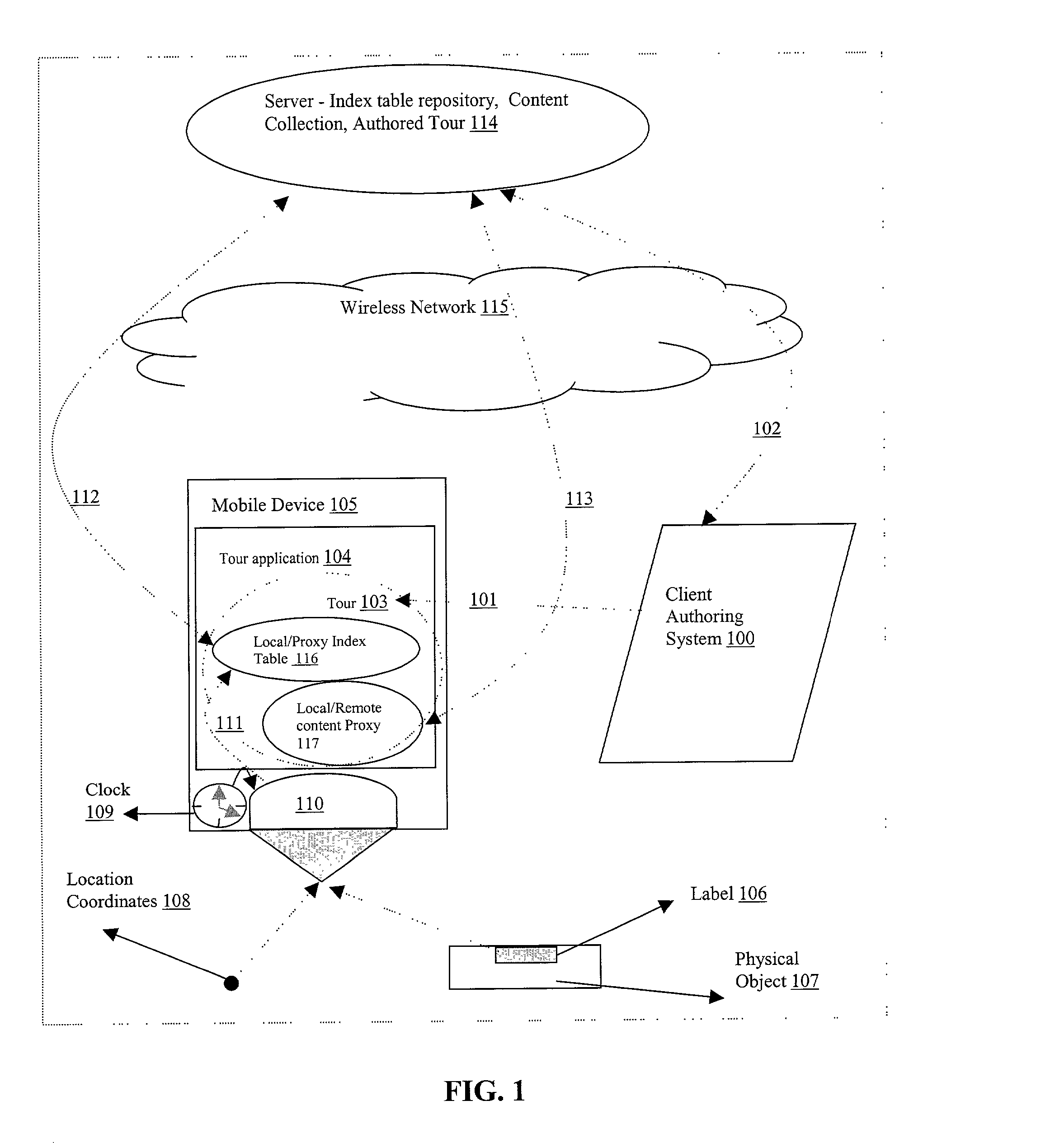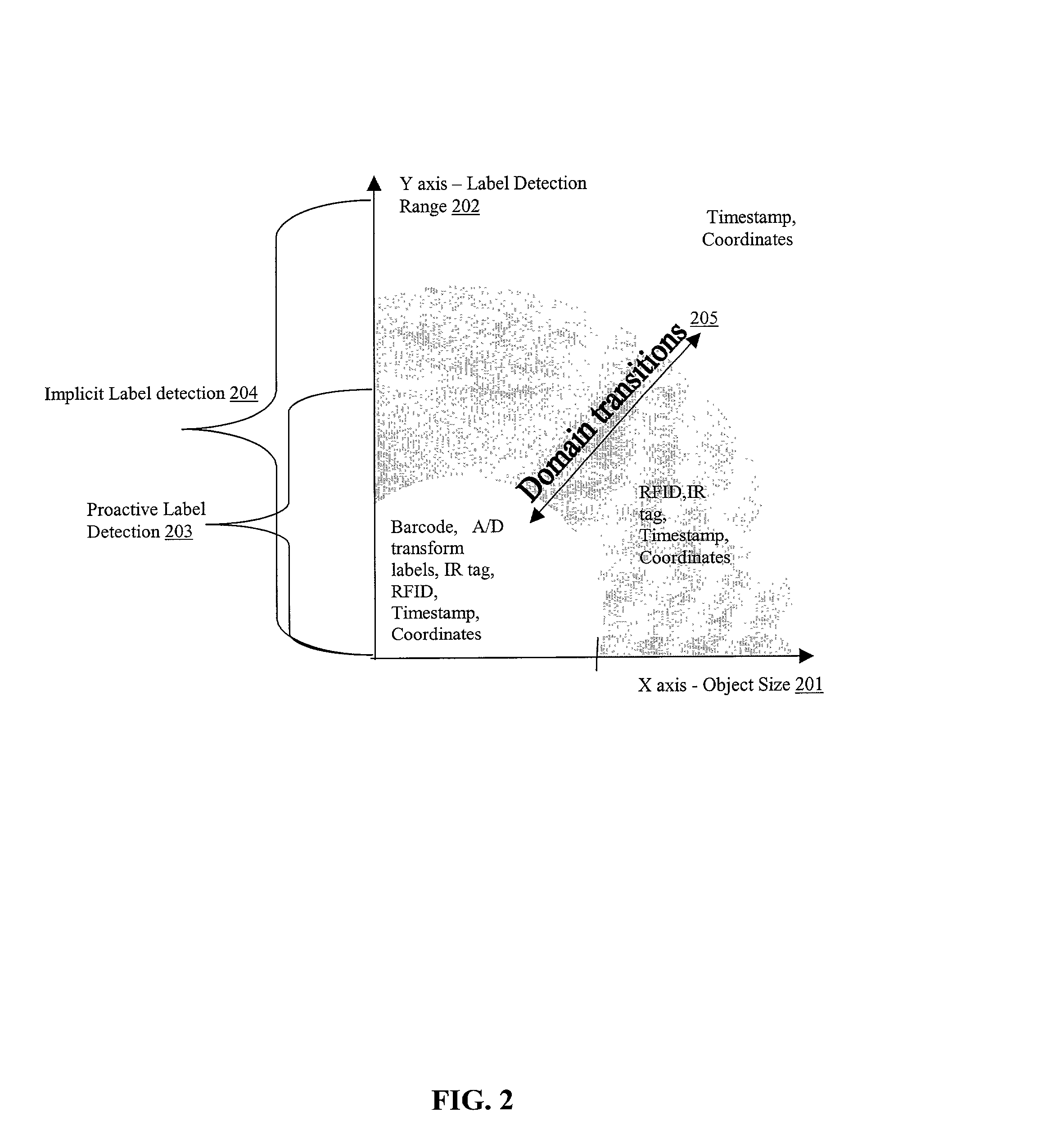However, attempts made to emulate the success of
the Internet in the
mobile device usage space have not been very successful to date.
These diversities
pose problems not present in the existing Internet world where all virtual objects can be uniformly addressed by a URL.
In particular, these attempts do not effectively address the labeling issue, i.e., interpreting information of different formats across different labeling schemes.
This is a problem unique to the physical world and not present in the PC-based virtual browsing method where all content in the
virtual world can be addressed by a URL.
Moreover, they do not support authoring of content that is bound to these different
label types, content authoring on the device (which is a key deficiency given that on-device content authoring is the most natural, efficient, and error-free method for most mobile
device usage scenarios), nor playback of content indexed by the different labeling schemes.
The absence of a labeling and content binding scheme makes it very hard for one to do custom labeling of objects and bind content to the labels.
The absence of an
annotation / feedback binding scheme makes it very hard to maintain the correspondence between the content and the
annotation / feedback.
However, no devices or applications presently exist that are capable of bridging these different application domains in a near seamless and transparent manner.
This system does not, however, address
key issues characteristic of the physical world such as custom labeling,
label type normalization, and uniform label indexing.
Furthermore, this system does not contemplate a tour like paradigm, i.e., a "tour" as
media content grouped into a logical aggregate.
The drawback of the system is that it imposes constraints on the capabilities of the device used to playback the content.
Accordingly, the system is deficient in that it fails to permit content to be authored and bound to multiple label types or support the notion of a tour.
The
disadvantage of the system is that it does not provide information in greater
granularity about individual objects at a location.
Another
disadvantage of the system is that the user of the portable device is passive and can only select among pre-existing identifier codes and messages.
The user cannot actively create identifiers nor can he / she create or annotate associated messages.
The system also fails to address the need for organizing objects into meaningful collections.
Yet another
disadvantage is that the system is targeted for use within indoor facilities and does not address outdoor locations.
One of the biggest drawbacks of this system is the inability to author content on the apparatus itself.
This makes it cumbersome for one who creates content to author it for the apparatus, i.e., one has to resort to a separate means for authoring content.
It also makes it harder to maintain and keep track of the association with the authored content, object identifiers, and the physical object.
The disadvantages of this system are the requirement for two separate apparatus making it quite unwieldy for several usage scenarios and the cumbersome assignment that needs to be done between digital codes and alphabets and words.
This apparatus suffers from the same drawbacks as some of the above-noted patents, in particular, the content authoring deficiency.
The key drawback of this system is that it does not support playback of recorded audio.
It also suffers from the same drawbacks as some of the above-noted patents.
Also, the
timestamp usage in the system fails to contemplate using a
timestamp as a trigger for playback of special temporal events or binding a timestamp to objects, coordinates, and labels.
The disadvantages of these systems are that the URL is directly encoded in the
barcode and cannot be modified and there is a one-to-one mapping between a physical object and digital URL information.
Nevertheless, all of the above systems disadvantageously treat each object, i.e., each
barcode, as an
individual item and do not provide a means to create logical relationships among the plurality of physical objects at the same location.
Another disadvantage of these systems is that they do not enable the user to create a personalized version of the information or to give feedback.
Although such a scheme may result in some audio quality degradation in the re-recording process, it would serve as a safe-
backup of valuable content on a PC.
However, it is cautioned that, during a transformation, some
media content types may be inappropriate or "lost" since the destination mobile personal device may not support some or all of the
media content in a tour.
For example, a mobile personal device without a display and only audio capabilities would be limited to presenting tour media content that is only in an audio format.
 Login to View More
Login to View More  Login to View More
Login to View More 


